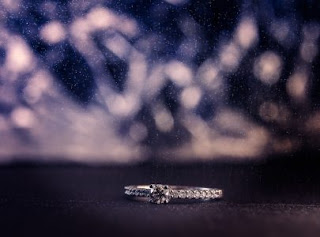Everything You Need to Know About CVD Diamonds : A Simple, Factual Guide - Limelight Diamonds
Your Complete Guide to Understanding CVD Diamonds.
Q: Are
CVD diamonds synthetic?
A: No, CVD diamonds are neither
synthetic nor artificial. They are as real as natural diamonds and are grown in
a laboratory instead of being mined from under the surface of the earth.
Q: Is
CVD (Chemical Vapor Deposition) the same as CZ (Cubic Zirconia)
A: Absolutely not, the two are
completely different. CVD diamonds are 100% real diamonds meaning they are
entirely made up of carbon. Cubic Zirconia does not contain any carbon and are
significantly weaker in hardness as compared to CVD diamonds that are real
diamonds.
Q: What
is the difference between natural diamonds & CVD diamonds?
There is no optical, thermal,
physical or chemical difference between natural & CVD diamonds. They both are made up
of carbon, however CVD diamonds have an edge over most natural diamonds as CVD
diamonds are 100% carbon, the purest type of diamonds – type IIa diamonds.
Q: What
is Type IIa?
A: Type IIa is a type of
diamond grade as classified by the world’s most prominent diamond grading and
certifying organizations such as Gemological Institute of India (GIA). The type
IIa diamond grade is applicable to the purest form of diamonds, devoid of any
chemical impurities whatsoever. Only 2% of natural diamonds are Type IIa, all
of Limelight diamonds are type IIa diamonds.
Q: How
are diamonds grown in a laboratory?
A: Diamonds can be grown in
laboratories through two processes namely CVD (Chemical Vapor Deposition) and
HPHT (High Temperature High Pressure)
Q: What
is the difference between CVD and HPHT?
A: All diamonds produced
through CVD process are 100% carbon & are thus purest diamonds, whereas
HPHT diamonds contain chemical impurities and hence are not the purest
diamonds.
Q: What is the difference in the diamond creation process through CVD & HPHT?
In chemical vapor deposition, a
natural diamond seed is infused with gases under controlled temperature &
pressure conditions, resulting in diamonds that are 100% carbon. The HPHT
method on the other hand uses molten metal as a catalyst, which results in
chemical impurities.
Q: What exactly happens in the CVD process?
A: In chemical vapor deposition
or CVD, diamonds are created by subjecting the natural diamond seed to high
pressure & temperature inside the machine chambers along with an
infiltration of gases. The gases work up their magic when subjected to high
pressure & temperature to disintegrate the carbon atop the seed to form
purest form of a diamond – a Type IIa diamond. There are currently only a
handful of players in the world as CVD is a capital-intensive and complex
technology that is also very hard to replicate.
Q: Why
are CVD diamonds cheaper than natural diamonds?
A: CVD diamonds are created
using an advanced technology in laboratories whereas natural diamonds are mined
from under the surface of the earth. CVD diamonds do not incur the expense of
mining and hence are significantly lesser in price.
Q: Do
CVD diamonds impact environment and our society?
In comparison to natural
diamonds, CVD diamonds do not cause environmental damage. They are devoid of
any ethical, social or environmental issues.
Q: Is
CVD technology readily available?
The CVD technology is capital-intensive
and is currently only available to a handful players across the globe.
Q: Do
CVD diamonds change color over time?
A: No, CVD diamonds are
equivalent to natural diamonds in terms of its color, optics, physical &
thermal compositions. So they do not change color over time and are as
resilient as natural diamonds.
Q: How
long does it take to grow a diamond through the CVD process?
A: Depending on the size of the
diamond, the growing process can take anywhere between 3-12 weeks but usually
takes 3-4 weeks.
Q: Can
you tell the difference between CVD diamonds and natural diamonds just be
looking at them?
A: No the naked eye cannot tell the difference between natural
diamonds and CVD diamonds. In fact, more often than not, CVD diamonds have a
better luster as compared to its natural counterparts. Specifically designed
hi-tech machines can tell the difference between CVD and natural diamonds.
GOVERNMENT INITIATIVES TO STRENGTHEN LAB-GROWN DIAMOND
TRADE IN INDIA

Really I enjoy your site with effective and useful information. It is included very nice post with a lot of our resources.thanks for share. i enjoy this post. Wholesale vendors for jewelry
ReplyDelete